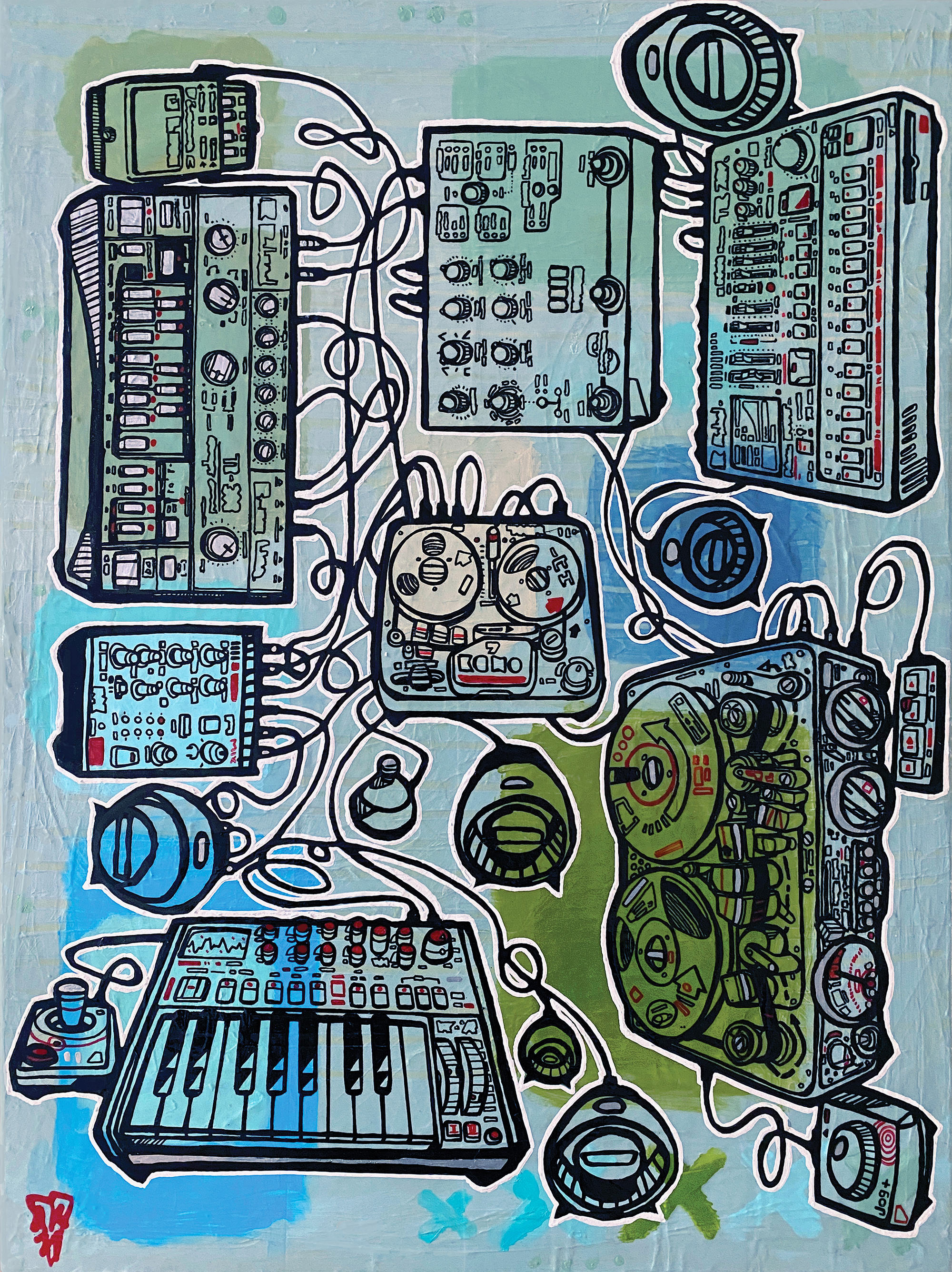Whenever my musician buddies or clients looking to start recording at home ask me what their first mic purchase should be, I often propose the Shure SM7B cardioid dynamic [Tape Op #36]. This decades-old design has been a workhorse for broadcasters and audio engineers. It’s inexpensive, durable, and surprisingly flexible in the studio. But my (ahem) standard reply may be changing after reviewing this new SD-1 Standard Dynamic microphone from Universal Audio. UA’s recent acquisition of Bock Audio/Soundelux and Townsend Labs has signaled their stride into the microphone design and manufacture market. UA’s hardware product spectrum now includes a series of flagship UA Bock mics, the Townsend Sphere L22 [#133] digital modeling mic, and the more accessible Standard Series mics, including our review model, the SD-1.
With its all-metal build, built-in internal shock mount, and close-proximity strengths for vocals, dialog, acoustic instruments, and drums, the obvious comparison (again) would be to contrast the SD-1 with the Shure SM7B. While I did plenty of parallel vocal and acoustic tracking with the SD-1 and my SM7B, I also put the SD-1 to work in multi-mic drum sessions to see how it matched up with different mic pres and workflows. The results were often revealing. Although the physical structure of the SD-1 housing is nearly identical to the SM7B (okay, it’s painted off-white as opposed to the SM7B’s dark grey), this new UA mic has a distinct character and tone that sets it apart from similar mics. To my ears, the low midrange of the SD-1 is less harshly resonant, and its high end has a little more extension and air than similar dynamic mics.
In most of my studio testing, I found the SD-1 to have tremendous flexibility in its neutral and natural sound, with explicit strengths in tracking vocals and broadcast-style dialog. The specs claim a flat frequency response of 50 Hz to 16 kHz, and in my testing, the SD-1 sounded smooth and a little less hyped than similar dynamic mics, especially in the 2 to 5 kHz range. And this isn’t exclusively a vocal mic! In particular, I enjoyed the SD-1 on acoustic guitar and snare drum; the transient response is excellent, and its super-directional end-address cardioid pattern has stellar off-axis rejection, so this mic can be relied on when source isolation is a priority. Using the SD-1 paired with free downloadable presets for the Apollo Console app provides a comprehensive variety of mic applications and tones I hadn’t even considered – although I couldn’t find a way to access the same presets quickly from within UA’s DAW, LUNA [Tape Op #138]. Headphone-adverse vocalists can confidently track using the SD-1 while monitoring through wedges or speakers, even in a somewhat noisy live or control room. The 200 Hz (6 dB per octave) low-cut and 3 to 5 kHz articulation boost DIP switches on the back of the mic body allowed me to quickly carve out some pleasant tonal variants; no flathead screwdriver required! The dense foam windscreen seemed to reduce plosives slightly more effectively than my SM7B windscreen, and the included 5/8-inch thread mount is identical to the SM7B, which is to say that it’s built to last. Deviating from the SM7B, the male XLR port is on the rear of the mic body. Although I prefer the SM7B style connector when using the mic in a desktop or broadcast style, most would agree that the SD-1 design is superior in terms of durability, as the short wire running to the SM7B’s mount base can get damaged. Having the XLR connection on the back of the mic body may or may not be aesthetically pleasing for video bloggers and the like, but note that I didn’t experience any practical difference with the SD-1 or notice any additional microphonic transmission through the attached mic cable.
After living with the SD-1 for a couple of weeks, here’s the headline for me: this is a rock-solid, well-built, “meat-and-potatoes” dynamic mic – and it’s available for around $100 less than the current retail on a Shure SM7B. If you’re in the market for a versatile go-to vocal mic that’ll stand the test of time, the SD-1 is one of the most compelling current offerings.




_disp_horizontal_bw.jpg)